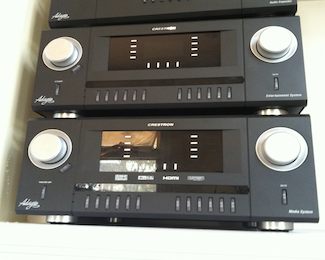Phantom Power Reduction

There are many ways to save energy around the house; from simple things like switching off lights when not in use or turning down the thermostat a couple of degrees, to more in-depth steps like buying high-efficiency appliances or adding more insulation.
Every step you take, big or small, to control energy usage is just one more piece to a larger puzzle. Put all of those pieces together, and you've got an efficient, green home that has minimal environmental impacts, and saves money.
There's one very important piece to the energy-saving puzzle that unfortunately often gets overlooked; unfortunate because this mystery energy hog can consume up to 10% of a home's total energy. That puzzle piece: standby power, also known as "phantom" or "vampire" load.
The source of this phantom load is the long list of electrical devices and appliances around the home that, even when turned off, consume a small amount of standby power. Identifying these phantom loads can help you save quite a bit of energy and money. The best part? It's a completely free and easy way to use less energy.
Phantom Power and Why It's Used
Many electronic devices use power whenever they're plugged in. They use this electricity for a variety of reasons: To maintain a standby mode so they can instantly be turned on with a remote control, to power a clock, to wait for a user input (like a computer printer)….the list goes on.
These devices, from TVs, DVD players, and cable TV receivers to coffee makers and microwaves, can all consume up to 30 watts of power, 24/7, when turned off. This can cost up to $500 a year in electricity bills each year! That seems silly to be wasting so much power for something that's supposedly "turned off."
Reducing or eliminating this wasted power, which has little real benefit to you as the user, can greatly reduce energy usage, and all of its related environmental and financial costs.
Step One: Energy Star!
If you are shopping for a new electrical device, look for our friend the Energy Star label. The U.S. government has decided (rightly so) that these products simply use way too much standby power, and are starting to award Energy Star certification to those products that have greatly reduced their standby power levels.
These Energy Star approved products use much less standby power: instead of 5 to 30 watts used during standby mode, they use less than 2 watts. Some go much lower, down to as low as 0.1 or 0.2 watts.
Some devices have to be on all the time, such as a DVR with a clock, to be useful. For these types of devices, it's critical to seek out the models with the lowest standby mode.
For other devices that don't need constant standby power, choosing models that use much less standby power is a great start, but it's not a perfect solution. The perfect solution: zero watts of energy used when the device is turned off.
Step Two: Switch Off!
Simply unplugging a device when not in use is the simplest solution to the problem, but isn't always convenient. Most people are not going to want to reach under or behind a cabinet to unplug a TV every day, for example.
A better solution is to plug these devices into a power strip that has an on/off switch. A strip with a lighted power switch will let you know if the strip is on or off.
If your house is wired with light-switch controlled outlets, you can also plug nonessential items into those outlets to easily turn them on or off.
There are newer devices, such as Belkin Conserve Power Switch, that can be used in areas where a power strip isn't an option, such as a kitchen countertop. It allows devices to be easily turned on and off right at the outlet.
Conclusion: A Little Goes a Long Way
Devices that use a tiny little amount of power when turned off may not seem like a big deal. But when you look around your home and see the dozens of devices, then multiply that by millions of homes in the U.S., you can see how reducing phantom loads can quickly (and painlessly) reduce our overall energy requirements.
comments powered by Disqus

























































































































































































